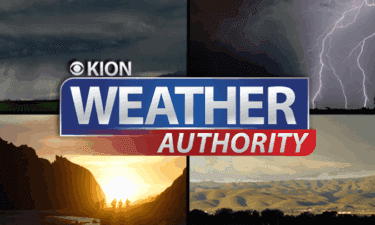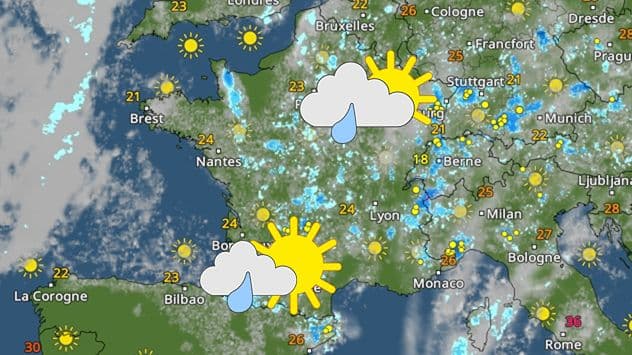Invisible Architects: Unraveling the Subtle Forces Shaping Your Daily Weather
Discover how invisible atmospheric shifts, from trade winds to drought indices, silently shape your daily life and local risks. Unravel weather's deeper science.
The Unseen Language of Atmospheric Stability
Our daily comfort and safety are silently shaped by a fundamental atmospheric property: stability. This invisible force dictates how air moves vertically, influencing everything from cloud formation to the spread of pollutants and, critically, fire risk. When the atmosphere is stable, air resists upward motion, trapping moisture and haze near the surface while suppressing the development of rain-producing clouds. We often see this expressed through terms like 'precipitable water values,' which indicate the total amount of moisture in a column of air. A significant drop in these values, perhaps by as much as half an inch over just 12 hours, signals a dramatic shift to drier, more stable conditions. This pattern, often reinforced by building ridges of high pressure aloft, leads to a noticeable decrease in cloud cover and shower activity, particularly in windward areas accustomed to more frequent rainfall. Such stability, while bringing clearer skies, can also elevate fire weather concerns, especially when paired with strong, dry winds. It's a subtle atmospheric dialogue that profoundly impacts our breathable air and the very ground beneath our feet.
Wind's Dual Nature: Trade Winds, Sea Breezes, and Local Impact
Building on the concept of atmospheric stability, the wind then adds another layer of complexity to our weather narrative. Often perceived merely as a breeze, wind possesses a dual nature, with broad-scale patterns interacting with local phenomena to create highly varied conditions. Dominant '', driven by expansive high-pressure systems thousands of miles away, typically bring consistent, moderate to breezy flow across vast regions. These prevailing winds largely determine where showers occur – often favoring windward slopes – and where drier conditions persist. However, when the broader synoptic flow weakens, even subtly due to a minor shift in a distant high-pressure system, local '' can emerge. These localized winds, born from differential heating between land and sea, can override the trade flow, shifting moisture inland and bringing unexpected showers to traditionally dry leeward or interior areas. This interplay means that while one side of an island might remain parched under steady trades, another could receive much-needed rain from a localized sea breeze, underscoring how these invisible air currents choreograph our daily meteorological experience.
Beneath the Surface: How Drought Indices Paint the Fire Risk
While atmospheric stability and wind patterns dictate immediate weather, a deeper, often unseen metric quietly gauges our vulnerability: the drought index. These indices, like the , provide a critical, long-term assessment of soil moisture and fuel dryness, painting a vivid picture of fire risk that goes far beyond daily humidity readings. When KBDI values soar above a critical threshold, such as 600, it signals that the ground is exceptionally dry, and any available fuel is primed to ignite. This condition isn't easily reversed; it often requires weeks or even months of significant rainfall to alleviate, especially as the dry season peaks. Even if a recent, isolated shower brings temporary relief, drier conditions quickly return, particularly to 'rain-starved' leeward areas that received minimal precipitation. Coupled with low afternoon humidities, these elevated KBDI values serve as a stark, invisible warning, reminding us that the risk of devastating wildfires can linger long after the last cloud has dissipated, a testament to the profound influence of prolonged dry spells.
From Data to Daily Life: The Art of Nuanced Forecasting
So, how do meteorologists synthesize these invisible architects – atmospheric stability, the dual nature of winds, and critical drought indices – into a coherent daily forecast that impacts our lives? It's a complex art, transforming raw data into actionable insights. Forecasters meticulously analyze soundings that reveal precipitable water levels and stability, scrutinize satellite imagery for cloud and shower coverage, and monitor ground-level observations, like those at major airports, for real-time wind and humidity readings. This continuous stream of information allows them to detect subtle shifts, such as a drier air mass moving in or winds strengthening to 'critical levels.' They then weigh the short-term impacts of recent rain against the long-term implications of elevated drought indices. This holistic approach enables them to issue timely warnings, like a Small Craft Advisory for mariners or a heightened fire weather concern for specific regions. The daily forecast, seemingly simple, is a sophisticated symphony of data interpretation, translating the unseen language of the atmosphere into practical guidance that shapes our choices, from what to wear to how we prepare for potential hazards.
Related Articles

Whispers of the Atmosphere: Unmasking Weather's Hidden Drivers

Whispers of the Atmosphere: Unmasking Weather's Hidden Drivers

The Whispering Sky: Unveiling the Local Stories Behind Every Forecast

The Whispering Sky: Unveiling the Local Stories Behind Every Forecast

The Atmosphere's Dance: Unveiling the Secrets Behind Daily Weather

The Atmosphere's Dance: Unveiling the Secrets Behind Daily Weather

The Sky's Whisper: Navigating Life's Atmospheric Rhythms
